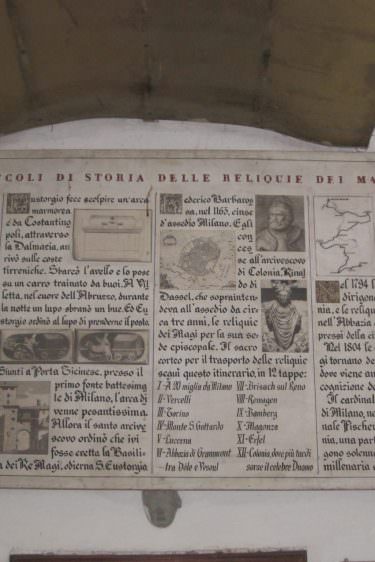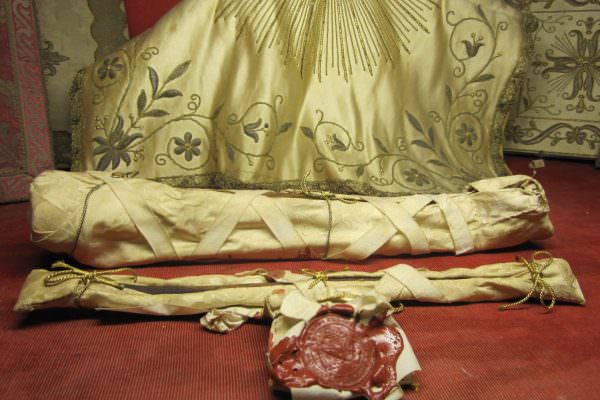The procession of the Wise Men (“Corteo dei Magi ” ) is one of Milan’s oldest traditions. It has been one of Milan’s top events since the Middle Ages.
The procession, that has been taking place every year on January 6th, the Epiphany day, is enthusiastically followed by the Milanese people who stand all along the way. It starts from Piazza Duomo, makes a stop in San Lorenzo, where those who represent the Magi meet Herodes and his guards , and make a final stop in Sant’Eustorgio. On a stage built on the parvis of the Basilica, the Magi join the Holy Family and give their presents to honour the Holy Child.
Beside the parvis, there is an altar with sculptures that represent the two-thousand years old story of the Magi.

The procession of the Wise Men has taken place since 1336.
It is organised by the Sant’Eustorgio community, and is interpreted by volunteers that wear precious costumes Its purpose is to evoke the Wise Men’s journey on their way to search for the Creator.
It’s been represented up to the present day almost without interruptions. It crosses the central roads of Milan from Piazza Duomo to Sant’Eustorgio Square to honour devotedly
the living crib that is waiting inside the Basilica.
On reaching ST. Eustorgio Square , if you look up, you’ll be fascinated by the imposing bell tower, until now the highest in Milan, with its legendary charm.
On its top, you won’t see a cross, but an eight-pointed star indicating that the Wise Men’s relics, the object of perennial devotion by believers, are preserved inside the Basilica.
How did the Wise Men’s relics arrive here?
According to the legend, the Magi, who had travelled back to Caldea and Persia after adoring the Infant Jesus, felt the urge to return to Jerusalem when they heard about the Son of God’s death on the cross

with the intention of bearing witness to the faith of which they had been heralds, and had to suffer martyrdom, too.
They were all buried in the same tomb, and their remains were found by Queen Elena, the mother of Constantine I ” the Great ” , the head of the Eastern Empire of Rome, and the relics were transferred from Jerusalem to Constantinople, where they were located and preserved in the Church of Saint Sophia .
Eustorgio was elected bishop in 343 .He went to Constantinople to honour the emperor, and Constantine gave him the Magi “s relics as a gift.
After loading the massive sarcophagus on a cart that was towed by oxen, he headed back to Milan, and when the cart arrived at the gate of Porta Ticinese the oxen collapsed . Eustorgio interpreted it as a sign of God , and that’s how he he chose this place for the construction of the first Basilica.
The Tradition becomes History
The tradition became history in 1164 when Emperor Frederick I Barbarossa plundered Milan and ordered the councelor and archbishop of Cologne to take possession of the Wise Men’s remains and transfer them there in order to be worshipped and honoured in that city, where a majestic cathedral was built to play host to the precious relics.
It was only in 1904 that Cardinal Ferrari, archbishop of Milan, obtained the restitution of some relics that are now preserved in an urn above the altar of the Magi inside the Saint Eustorgio Basilica….






















